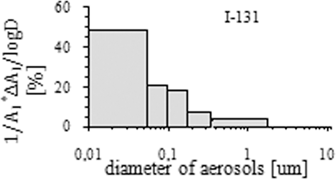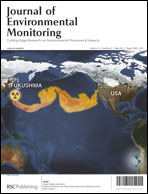Aerosol residence times and changes in radioiodine-131I and radiocaesium-137Cs activity over Central Poland after the Fukushima-Daiichi nuclear reactor accident
Abstract
The first detectable activities of radioiodine 131I, and radiocaesium 134Cs and 137Cs in the air over Central Poland were measured in dust samples collected by the ASS-500 station in the period of 21st to 24th of March, 2011. However, the highest activity of both fission products, 131I and 137Cs: 8.3 mBq m−3 and 0.75 mBq m−3, respectively, were obtained in the samples collected on 30th March, i.e. ∼18 days after the beginning of the fission products’ discharge from the damaged units of the Fukushima Daiichi Nuclear Power Plant. The simultaneously determined corrected aerosol residence time for the same samples by 210Pb/210Bi and 210Pb/210Po methods was equal to 10 days. Additionally, on the basis of the activity ratio of two other natural cosmogenic radionuclides, 7Be and 22Na in these aerosol samples, it was possible to estimate the aerosol residence time at ∼150 days for the solid particles coming from the stratospheric fallout. These data, as well as the differences in the activity size distribution of 7Be and 131I in the air particulate matter, show, in contrast to the Chernobyl discharge, a negligible input of stratospheric transport of Fukushima-released fission products.


 Please wait while we load your content...
Please wait while we load your content...